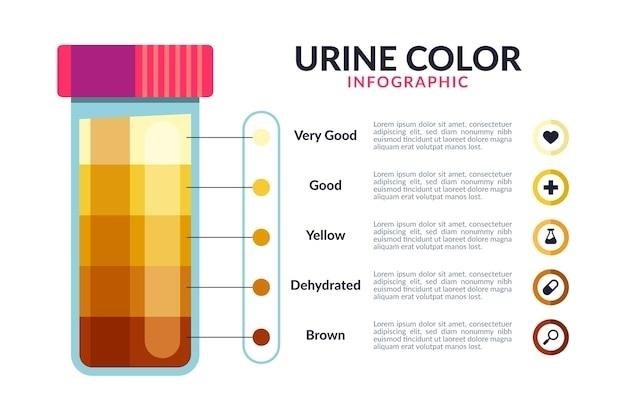Ensuring your child’s safety during travel is paramount; proper car seat installation is crucial for minimizing risk in the event of an accident.
Parents should always consult both the car seat and vehicle manuals for detailed guidance, and consider professional installation assistance.
Understanding weight and height limits, alongside correct installation methods, are vital components of child passenger safety.
Importance of Correct Installation
Correct car seat installation is absolutely critical, as studies reveal a shocking statistic: approximately three out of four car seats are installed incorrectly. This significantly compromises the seat’s ability to protect a child during a crash.
A properly installed seat distributes crash forces effectively, safeguarding the child from serious injury. Utilizing the LATCH system or seat belts correctly, and ensuring a snug fit—verified by the “inch test”—are fundamental steps.
Furthermore, rear-facing as long as possible, even beyond the minimum age or weight requirements, is strongly recommended by the American Academy of Pediatrics (AAP) for enhanced safety. Seeking guidance from a Certified Child Passenger Safety Technician can provide invaluable peace of mind and ensure optimal protection.
Understanding Different Car Seat Types
Car seats are categorized based on a child’s weight and height, evolving with their growth. Rear-facing seats are essential for infants and young toddlers, providing optimal head and neck support.
Convertible seats transition from rear-facing to forward-facing, offering extended use. Forward-facing seats with a harness are then utilized until a child reaches the appropriate size and maturity for a booster seat.
Booster seats position the seat belt correctly across a child’s body, ensuring proper restraint. The Safety 1st Guide 65 is a popular convertible model, requiring careful installation following manufacturer instructions. Understanding these distinctions is key to selecting and using the appropriate seat for each stage of a child’s development.

Preparing for Installation
Before beginning, thoroughly review both the car seat manual and your vehicle’s owner’s manual for specific instructions and compatibility details.
It’s recommended to have the car seat installed by the manufacturer initially, or seek a professional demonstration for proper setup.
Reading the Car Seat Manual
The car seat manual is your primary resource for understanding the specific features and installation requirements of your Safety 1st car seat model, like the Guide 65.
Carefully read through the entire manual before attempting installation. Pay close attention to weight and height limits, as exceeding these compromises safety.
Locate sections detailing the LATCH system or seat belt installation, noting any vehicle-specific considerations. Understand the proper use of angle indicators for rear-facing positions.
Familiarize yourself with harness adjustments and re-thread procedures. The manual will illustrate correct buckle usage and tightness checks, like the “inch test.”
Keep the manual readily accessible for future reference, especially if reinstalling the seat or traveling in different vehicles. It’s a vital component of safe travel!
Understanding Vehicle Owner’s Manual
Your vehicle’s owner’s manual contains crucial information regarding child safety seat installation, complementing the car seat manual.
Locate the section detailing LATCH anchor locations within your specific vehicle model; these may vary significantly.
Understand how to properly lock the seat belt system, as a secure seat belt is essential for correct installation when not using LATCH.
Identify any vehicle-specific limitations or recommendations regarding car seat placement, such as avoiding installation in seats with active airbags.
Refer to the manual for guidance on top tether anchor points and weight limits for their use. Proper tethering significantly enhances safety.
Always prioritize the information in both manuals to ensure a secure and compliant installation.
Checking Car Seat Weight and Height Limits
Before installing any car seat, meticulously check both the weight and height limits specified by the manufacturer on the seat’s label.
Exceeding these limits compromises the seat’s protective capabilities in a crash, potentially causing serious injury to your child.
New car safety seats clearly display maximum weight limits for LATCH anchor usage; adhere to these guidelines strictly.
Regularly reassess your child’s weight and height as they grow, transitioning to the next appropriate car seat stage when necessary.
Remember that limits differ between rear-facing and forward-facing modes; consult the manual for specific values.
Prioritize these limits to ensure your child remains safely restrained throughout every journey.

Installation Methods
Two primary methods exist for securing a car seat: utilizing the LATCH system or employing the vehicle’s seat belts for a firm fit.
Choosing the correct method, and executing it properly, is essential for optimal child passenger safety.
Using LATCH System
The LATCH (Lower Anchors and Tethers for Children) system offers a convenient and secure method for installing car seats without using vehicle seat belts. First, locate the lower anchors in your vehicle – typically found in the seat bight, between the seat cushion and backrest.
Connect the car seat’s lower anchors to the vehicle’s anchors, ensuring a positive click to confirm a secure connection. HealthyChildren.org advises checking the car seat manufacturer’s recommendations for maximum child weight when using lower anchors. New car seats display this limit on their label.
Finally, secure the top tether, if equipped, to the designated anchor point in your vehicle. Proper use of the LATCH system significantly enhances car seat stability and reduces movement during travel, contributing to improved child safety.
Locating LATCH Anchors
Identifying the LATCH anchors within your vehicle is the initial step towards a secure car seat installation. These anchors are generally situated in the seat bight – the crevice where the seat cushion meets the seat back. Look for metal bars or loops, often hidden by fabric flaps, on the vehicle seat structure.
Consult your vehicle owner’s manual for the precise location of LATCH anchors, as placement can vary between makes and models. Some vehicles may have anchors in all rear seating positions, while others may limit them to specific locations.
Carefully inspect each seating position to confirm the presence of anchors before proceeding with car seat installation, ensuring a compatible and safe connection point.
Connecting Lower Anchors
Once located, connect the car seat’s lower anchors to the vehicle’s LATCH anchors. Typically, this involves clicking the car seat’s connectors onto the vehicle anchors until a secure attachment is confirmed. Ensure each connector is firmly latched and exhibits no looseness.
Apply gentle pressure to the car seat while simultaneously checking the connection; it should not move or dislodge. HealthyChildren.org emphasizes checking manufacturer recommendations for maximum weight limits when using lower anchors. New car seats display this limit on their label.
Remember, if the child exceeds the weight limit for LATCH usage, transition to seat belt installation for continued safety.
Securing the Top Tether
The top tether is a crucial component, significantly reducing forward movement during a crash. Locate the tether anchor point in your vehicle – it’s usually on the rear shelf, seatback, or vehicle frame. Attach the car seat’s tether strap to this anchor point.
Tighten the tether strap according to the car seat’s instructions, eliminating any slack. A properly tightened tether minimizes car seat rotation, enhancing protection. Remember, using the top tether is especially important in forward-facing installations.
Always refer to your vehicle’s owner’s manual for the precise location of the tether anchor and weight limits for its use.
Using Seat Belts
When installing with seat belts, ensuring a secure fit is paramount. First, route the vehicle’s seat belt through the correct car seat belt path, as indicated in the car seat manual. Crucially, the seat belt must lock to hold the car seat firmly in place.
To lock the belt, check your vehicle’s manual – some require pulling the belt all the way out, while others have a locking latch plate. Once locked, tighten the seat belt by pushing down firmly on the car seat while pulling the slack out of the belt. Verify a snug fit with minimal side-to-side or front-to-back movement.
Locking the Seat Belt
Securing a car seat with a seat belt necessitates understanding your vehicle’s locking mechanism. Not all seat belts lock the same way; some require fully extending the belt until it ratchets, indicating it’s locked. Others utilize a latch plate that clicks into a locked position when pulled.
Consult your vehicle owner’s manual to identify the specific locking method for each seat position. Testing the lock is vital – attempt to pull the belt out further once you believe it’s locked; if it extends, it hasn’t engaged correctly. A properly locked seat belt is fundamental for a safe and stable car seat installation.
Routing the Seat Belt Correctly
Proper seat belt routing is critical for effective car seat installation. The belt must follow the designated path outlined in both the car seat and vehicle manuals. Typically, this involves threading the belt through the correct belt path on the car seat, ensuring it isn’t twisted or obstructed.
Avoid routing the belt over any parts of the car seat that aren’t specifically designed for belt passage. Incorrect routing can compromise the seat’s ability to restrain the child during a crash. Always double-check that the belt lies flat and isn’t pinched, ensuring optimal force distribution in the event of sudden deceleration.
Tightening the Seat Belt
After routing the seat belt correctly, achieving a snug fit is paramount. Ensure the seat belt locks to prevent loosening during travel; many vehicles have locking latchplate mechanisms. Apply firm pressure to the car seat while pulling the shoulder belt to remove any slack.
A properly tightened seat belt will minimize movement of the car seat – ideally, less than one inch side-to-side or front-to-back. If the belt doesn’t tighten sufficiently, try a different seat belt position or consult a Certified Child Passenger Safety Technician for assistance. Remember, a secure installation is non-negotiable for your child’s safety.

Rear-Facing Installation
Rear-facing is the safest position for young children, and maintaining the correct recline angle is essential for proper protection and comfort.
Always check the angle indicators and adjust as needed, keeping children rear-facing as long as possible within weight and height limits.
Angle Indicators and Adjustment
Proper recline is critical during rear-facing installation, ensuring optimal protection for your child. Most car seats feature built-in angle indicators – lines or levels – to guide correct positioning.
Refer to your Safety 1st Guide 65 manual for specific angle requirements, as these vary by model. Adjust the recline base until the indicator shows the seat is within the safe zone.
If your vehicle seat has a natural recline, utilize it to achieve the correct angle. Bubble level indicators are also common; center the bubble within the marked area.
Incorrect angles can compromise the car seat’s ability to protect your child in a crash, so double-check and readjust as needed. Remember, maintaining the proper recline is a key safety measure.
Regularly verify the angle, especially after adjustments to the vehicle seat or car seat itself.
Recline Angle Considerations
Maintaining the correct recline angle is paramount for rear-facing car seat safety, particularly with the Safety 1st Guide 65. A too-upright angle can cause the child’s airway to be restricted in a crash.
Conversely, a too-flat angle may not provide adequate head and neck support. The ideal recline ensures the headrest properly cradles the child’s head.
Always consult the car seat manual for the specific recline angle range recommended for your child’s age and weight. Utilize the built-in angle indicators as a guide.
Vehicle seat contours can influence the achieved angle, so experimentation and careful adjustment are often necessary. Prioritize a secure and comfortable fit.
Remember, proper recline contributes significantly to minimizing injury risk during a collision.
Maximum Rear-Facing Weight Limits
Understanding the maximum rear-facing weight limit is critical for continued safety as your child grows. Manufacturers, like Safety 1st, clearly label these limits on the car seat itself.
HealthyChildren.org emphasizes checking these limits, as exceeding them compromises the seat’s protective capabilities. Current recommendations encourage extended rear-facing as long as possible.
The American Academy of Pediatrics (AAP) advises keeping children rear-facing until they outgrow the convertible seat’s height or weight restrictions, even beyond age two.
Exceeding the weight limit can affect how the car seat performs in a crash, potentially increasing the risk of injury. Regularly check your child’s weight and adjust accordingly.
Prioritize rear-facing as long as it’s safe and appropriate for your child’s size and development.

Forward-Facing Installation
When transitioning to forward-facing, always utilize the top tether for enhanced stability and reduced head excursion during a collision.
Proper harness positioning and a snug fit are essential; ensure no slack allows excessive movement of the car seat itself.
Using the Top Tether
The top tether is a critical safety feature when installing a car seat in the forward-facing position. It significantly reduces head excursion during a crash, minimizing the risk of injury to your child. Locate the tether anchor point in your vehicle – it’s usually on the rear shelf, the vehicle seat back, or the ceiling.
Attach the tether strap from the car seat to this anchor point, and tighten it according to the car seat manufacturer’s instructions. A properly tightened tether will limit forward movement of the seat, keeping your child more secure. Always refer to your vehicle’s owner’s manual for the exact location of the tether anchor and any weight limits associated with its use.
Remember, using the top tether is highly recommended and often required for forward-facing installations, offering an extra layer of protection for your little one.
Proper Harness Positioning
Correct harness positioning is essential for optimal car seat safety. Ensure the harness straps are at or above your child’s shoulders when forward-facing, and at or below the shoulders when rear-facing. The chest clip should be positioned at armpit level – this helps keep the straps properly positioned during a crash.
Tighten the harness straps so you cannot pinch any excess webbing at the shoulder. A snug fit is crucial; loose straps compromise the seat’s protective capabilities. Avoid adding bulky clothing or padding under the harness, as this can create slack.
Regularly check the harness fit as your child grows, adjusting the straps as needed to maintain the correct positioning and tightness. A properly fitted harness is a cornerstone of car seat safety.
Checking for Movement
After installation, rigorously check for any movement of the car seat. Grasp the seat near the belt path or LATCH connection and attempt to move it side-to-side and front-to-back. Ideally, the seat should move less than one inch in any direction – this is known as the “Inch Test.”

If excessive movement is detected, re-evaluate the installation process. Retighten the seat belt or LATCH connectors, ensuring they are securely fastened. Confirm the vehicle’s seat belt is locked, or the LATCH anchors are properly engaged.
Remember, a stable installation is paramount for protecting your child. Continue checking for movement periodically, especially after adjustments or long trips.

Specific Car Seat Models
The Safety 1st Guide 65 requires careful attention to rear-facing installation, often posing questions for parents regarding proper angle and secure attachment.
Safety 1st Guide 65 Installation
Installing the Safety 1st Guide 65 car seat requires a step-by-step approach, prioritizing a secure and correct fit within your vehicle. Many parents seek guidance, particularly with rear-facing installation, as achieving the proper recline angle is essential for infant safety.
Begin by locating appropriate LATCH anchors or preparing the vehicle seat belt for use. Ensure the car seat base is level, utilizing the built-in angle indicators to confirm correct positioning. Tighten the installation, leaving no more than an inch of side-to-side or front-to-back movement – this is the critical “inch test”.
Always refer to both the car seat manual and your vehicle’s owner’s manual for specific instructions tailored to your car model. Remember, a properly installed car seat is the first line of defense in protecting your child during a collision.

Post-Installation Checks
After installing the car seat, perform the “inch test” to verify minimal movement and confirm harness tightness for optimal child protection during travel.
The Inch Test
The “inch test” is a crucial post-installation check to ensure your car seat is securely fastened. Grasp the car seat near the belt path – where the LATCH strap or seat belt goes through the seat – and attempt to move it side to side or front to back.
If the car seat moves more than one inch in any direction, it’s considered too loose and needs to be tightened. Re-evaluate the installation process, ensuring the LATCH connectors are firmly attached or the seat belt is properly locked and snug.
Remember, a properly installed car seat will have minimal movement, providing maximum protection for your child in the event of a crash. This test is a simple yet effective way to confirm a safe and secure installation.
Harness Tightness Check
After securing your child in the car seat, verifying harness tightness is essential for optimal safety. The harness should lie flat against your child’s collarbone, without any slack. Perform the “pinch test” – attempt to pinch the harness strap at your child’s shoulder.
If you can pinch any excess webbing, the harness is too loose and needs to be tightened. Adjust the harness straps until you can no longer pinch any webbing between your fingers. Ensure the harness is snug but doesn’t restrict your child’s breathing or movement.
Proper harness tightness prevents your child from sliding up or out of the seat during a sudden stop or collision, maximizing protection.

Common Installation Mistakes
Frequently, incorrect recline angles and loose installations compromise car seat safety; always double-check these critical aspects for secure child protection during travel.
Incorrect Recline Angle
Maintaining the correct recline angle is absolutely critical, especially for rear-facing car seats. An improper angle can significantly compromise the seat’s ability to protect a child during a crash, potentially leading to airway obstruction or head flopping.
Many car seats feature angle indicators to assist with achieving the appropriate recline. These indicators must be carefully observed and adjusted as needed. Refer to the car seat manual for specific angle requirements for your model, like the Safety 1st Guide 65.
Insufficient recline can cause a baby’s head to slump forward, restricting their breathing. Conversely, too much recline might not provide adequate side impact protection. Always prioritize a secure and properly angled installation.
Loose Installation
A loose car seat is a major safety hazard, drastically reducing its effectiveness in a collision. Excessive movement—more than one inch side-to-side or front-to-back at the belt path—indicates an improperly secured installation.
Whether using LATCH or the vehicle’s seat belt, ensure a snug fit. Regularly check for looseness, as car seats can shift with vehicle use. The “Inch Test” is crucial: firmly grasp the seat near the belt path and attempt to move it.
If movement exceeds one inch, retighten the system. Remember, three out of four car seats are installed incorrectly, highlighting the importance of diligent checking and re-evaluation.

Resources and Further Help
For expert guidance, seek Certified Child Passenger Safety Technicians; manufacturer websites offer support and detailed instructions for specific Safety 1st models.
Certified Child Passenger Safety Technicians
Locating a Certified Child Passenger Safety Technician (CPST) provides invaluable, hands-on assistance with car seat installation. These professionals are rigorously trained to ensure your car seat is correctly installed in your specific vehicle, maximizing its protective capabilities.
CPSTs can address individual concerns, demonstrate proper harness positioning, and verify that the installation meets all safety standards; They can also help decipher complex instructions and offer guidance on selecting the appropriate car seat for your child’s age, weight, and height.
To find a CPST near you, resources like the National Child Passenger Safety Certification Training Program website are available. Utilizing a CPST offers peace of mind, knowing your child is traveling as safely as possible.
Manufacturer Websites and Support
Safety 1st, and all car seat manufacturers, offer extensive resources on their websites to support proper installation and usage. These resources often include detailed instruction manuals, installation videos, and frequently asked questions addressing common concerns.
Directly contacting the manufacturer’s customer support team can provide personalized assistance with specific questions related to your car seat model, like the Guide 65. They can clarify installation steps and offer troubleshooting advice if you encounter difficulties.
These websites frequently feature compatibility lists, indicating which vehicles their car seats have been tested in, ensuring a secure fit. Utilizing these resources empowers parents to confidently install and use their car seats correctly.
































